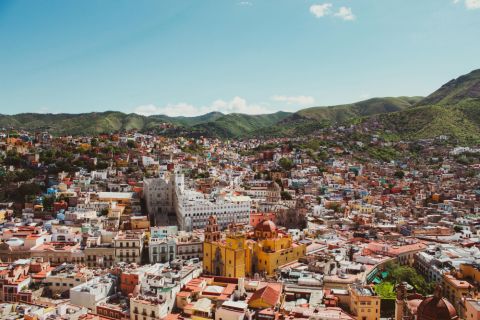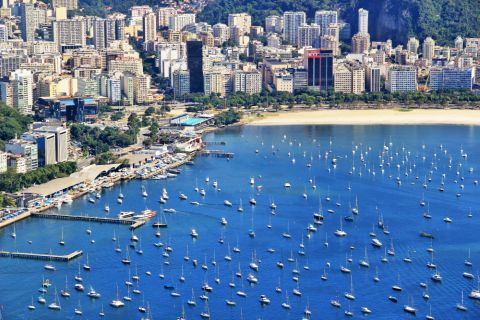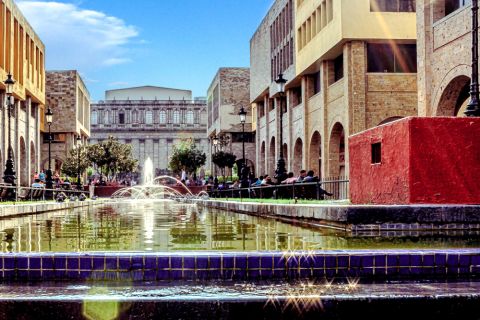Latin America's plastics industry cautiously optimistic about 2023
main text
Latin America's plastics industry cautiously optimistic about 2023
The Latin American plastics industry accounted for approximately 4% of global production in 2021 while facing competitiveness challenges dependent on political and economic stability, improvements in infrastructure, raw materials competitiveness, training of workforce and update of industrial machinery and processes.
In 2022, a year of World Cup, the plastics industry in Latin America had to endure a nervous game dictated by market uncertainty and supply problems.
In a business environment affected by high inflation, general elections and a roller coaster of raw material prices, higher shipping costs and extended transit times also affected foreign trade, despite a more favorable exchange rate resulting from local currencies' devaluation.

The plastics industry in Latin America cautiously expects a more favorable scenario in 2023.
In the environmental front, the region has been resilient to consumer and legislation demands, with many initiatives taking place in order to increase recycling rates, circularity, recyclate quality as well as the use of sustainable sources of raw materials.
In the meantime, the industry in the region was also hardly hit by the pandemic but has now generally recovered to pre-pandemic levels.
Brazil continues as the region’s powerhouse
Because of its strong domestic manufacturing sector, Brazil should remain as the main plastics producer in the region. The Latin America´s largest country was set to expect slow economic growth in the coming years as a result of prolonged pandemic consequences, political instability, supply chain disruptions and structural bottlenecks.
However, with a new government set to take charge in January 2023, expansionist policies are supposed to be put in place with incentives to the industrial sector which could lead to higher growth in the future.
On the other hand, possible fiscal stimulus by the new administration will be limited in the short term by high levels of interest rates which is already hindering expansion in economic activity despite the ongoing downward trend in raw material prices registered worldwide in recent months. Currently, the Brazilian Central bank expects a GDP growth rate not exceeding 1 % in 2023.
Brazilian Plastics Industry is advancing sustainability and striving to return to pre-2015 levels. According to the Brazilian Association of the Plastics Industry, the plastics converting sector in Brazil generated a total of approximately US$ 23.7 billion in 2021.
The production volume corresponded to 7.1 million tons of plastics products in 2021, returning to pre-pandemic levels, but away from an average 8.5 million tons registered before the political crisis which engulfed the country in the years 2015/2016.
Particularly, the continuation of a current government welfare program aimed at low-income families is expected to maintain in 2023 an annual 2-3% growth rate in the flexible packaging sector, on par with the food industry activity.

Because of its strong domestic manufacturing sector, Brazil remains the main plastics producer in the region.
Another positive development for the industry was the reduction in federal tax on industrialized goods which helped sustain the overall performance of the plastics sector in 2022.
In 2021, the country imported 0.75 million tons of plastics products, with 45.8 % coming from China, 5.7 % from the U.S. and the remaining from several different countries. Exports of processed plastics (0.32 million, tons in 2021) went mainly to Argentina (23.8 %), the U.S. (13.6 %), Paraguay (10.7 %) and Chile (10.2%).
With approximately 11,000 plastics processing companies, the main markets for plastics products in Brazil in 2021 were Packaging (41 %), Construction (23.9%), and Automotive (8.1 %), with other relevant segments (agricultural, furniture, disposables, and others) accounting for the remaining balance. Extrusion (film, sheet, profile, blow molding) is the main converting process used in the industry (52,1%) followed closely by Injection Molding (45.8%).
Environmental concerns and sustainability requirements have been addressed by the Brazilian Plastics Industry. Braskem, the leading resin manufacturer in the country, is expanding its production of renewable sugarcane-based polyethylene by 30%.
In another front, resin producers have been very active in developing the PCR (post-consumer resin) sector through partnerships with recycling companies as well as via acquisition of recyclate manufacturers.
Smaller companies in the recycling business have also expanded their activity with the production of post-consumer recycled plastics reaching 0.88 million tons in 2020.
According to the Brazilian Association of the Plastics Industry, of the 0.88 million tons of post-consumer recycled plastics, integrated recyclers (which have recycling and production of new products in the same company) convert about 30% of the volume with the remaining 70% passing through other steps in the conversion industry for the production of new parts.
In 2023, the recycling segment is expected to expand at a faster rate than the overall plastics industry spurred by current trends and opportunities in the sector.
Mexico: USMCA partnerships drive the market; packaging remains strong
Mexico is the second largest plastics manufacturer in Latin America and should keep its ranking for the foreseeable future. The country is the largest exporter and importer of plastics products in the region resulting mostly from trade flows with USMCA (United States-Mexico-Canada Agreement) partners.
It is expected to lead Latin America’s absolute growth in the plastics industry in the coming years driven by an expanding automotive sector and increasing demand for plastic packaging.

Mexico is the second largest plastics manufacturer in Latin America and shall keep its ranking for the foreseeable future.
The plastics industry in Mexico has been propped up by reshoring initiatives and new orders received mainly from USMCA partners U.S. and Canada in spite of higher inflation rates, a slow domestic recovery and a recent global decline in economic activity. The industry's production volume has been developing at a steady average of approximately 3.7% in the past five years.
Mexico´s plastics industry size, including raw materials and parts production as well as recycling, was estimated at USD 47 billion in 2021, according to the U.S. International Trade Administration. A slowdown in primary industries led to a shortage of resins for the converting industry recently.
On the other hand, orders from customers increased during the current year and converters managed to keep production steady with timely schedules for delivery of products.
The main drives of the plastics industry in Mexico remain the packaging sector (47%) and construction (12%), with automotive, agriculture, and textiles being also relevant.
In the packaging sector, many companies supply the food and beverage, and pharmaceutical industries, with most packaging products used in the food and beverage sector being produced locally.
In the construction industry, Mexico has moved in recent years from being traditionally metal-based to incorporating plastics in water and gas piping, windows, doors and coverings, with more plastics products expected to be adopted in the coming years.
As for the automotive sector, plastics products have enabled the industry to reach its goals of reducing car weight while seeing the demand for plastics parts to consistently grow.
In agriculture, small local producers of films and pipes have been using recycled plastics to increase production.
In the textiles segment, non-woven experienced a boost during the pandemic, as they are the raw material for medical protective clothing and masks - also being popular in the recreation industry and used in mining applications as well because of its properties.
Regarding environmental issues, the country recycles about 14.5% of the domestic plastics consumption and has seen no significant increase in these rates in the last year. Biopolymers have drawn a lot of interests from companies concerned with reduction in carbon footprint and sustainability.
Source : https://www.adsalecprj.com/en/news_show-79890.html
Edit : HANDLER
- PreviousEVs and a 'massive amount of plastics' 23.02.19
- NextBio-based polymers grow at CAGR of 14% in 2022 - 2027, says nova-Institute 23.02.19
